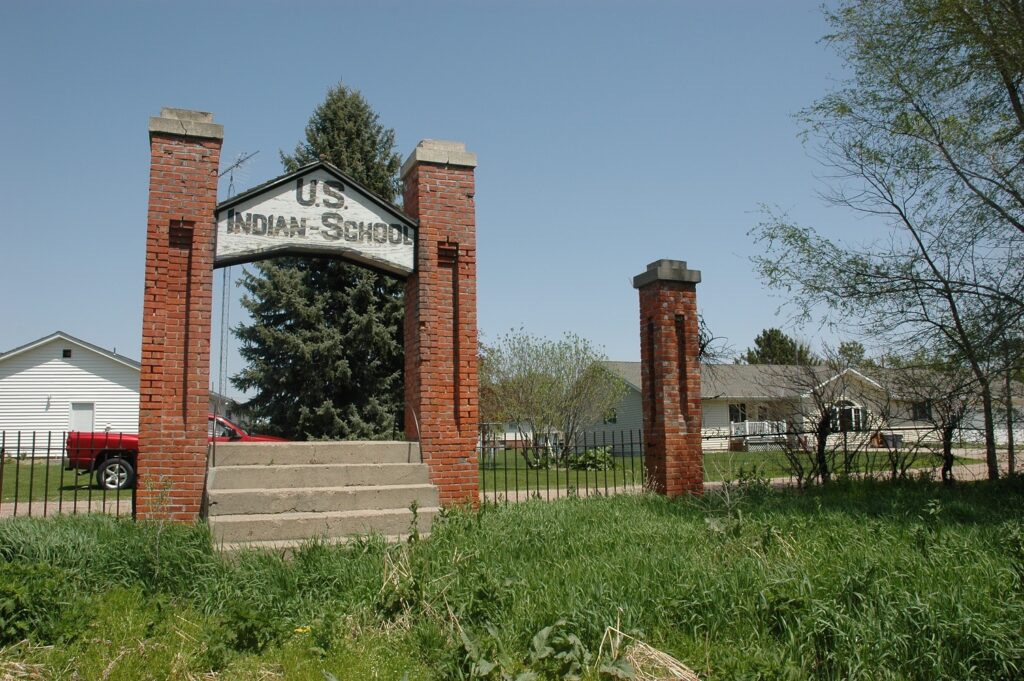By Ryan Reed
The two story brick building capped with a side gable roof is the last remnant of the extensive US Indian Industrial School campus in Genoa, Nebraska. Once situated on 320 acres, the school consisted of 39 buildings that housed over 600 Native American children. The purpose of the school was to assimilate Native Americans into white culture. Eighteen buildings, which include agricultural, industrial and residential, are the last vestiges of the United States legacy of forced assimilation in Nebraska. This collection of buildings were added on the National Register of Historic Places in 1978.
Looking at a map of Nebraska, Nance County stands out due to its unusual shape. The boundaries almost look like they were cut and pasted onto an existing map of the state. The odd boundaries were actually created in 1857 when the area was established as the Pawnee Reservation.
On September 24, 1857, the Four Confederated Bands of the Pawnee (present day Pawnee Nation of Oklahoma) relinquished a large portion of the Sandhills in Nebraska to the United States Government. Article One of Cession 408, the treaty that relinquished the land, stipulated that the Pawnee must move to a reservation bisected by the Loup River. That reservation today is within the boundaries of present day Nance County. After Nebraska gained statehood in 1867, the state extinguished the Pawnees’ rights to their land, sold it and used proceeds to obtain lands elsewhere for the tribe. In 1876 the tribe was relocated to its present-day location in central Oklahoma.
Article Three of the treaty established a manual labor school to assimilate Pawnee children into white culture. The treaty stated, “The Pawnee, on their part, agree that each and every one of their children, between the ages of seven and eighteen years, shall be kept constantly at these schools for, at least, nine months in each year.” This was the origin of the US Indian Industrial School in Genoa, Nebraska.
After the obligation of Cession 408 was extinguished after the removal of the Pawnee, the United State Office of Indian Affairs converted the site for the establishment of the fourth non-reservation boarding institution in the country. The existing buildings were removed and substantial brick buildings were constructed. The school formally open in 1884 and continued operating until 1933. Over the years, the campus was demoed and used of farming and subdivided into residential plots. The former agricultural, industrial and residential buildings are the last remnants of the US Indian Industrial School campus in Genoa.
Footnote Cession 408 quote.







